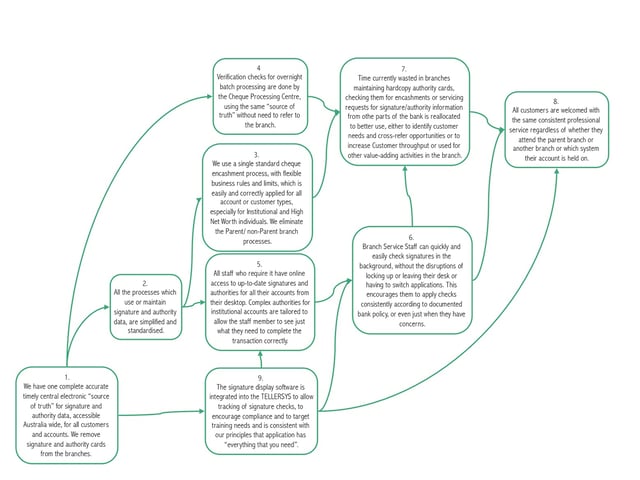Enabling 'thinking through'
In our last blog we talked about the importance of thinking through decisions to consider not only the immediate impacts but also the long-term impacts and implications.
This blog takes this further to explain how these decisions control and constrain what you can do as your project progresses. We call this “Path Dependency”.
Path dependency is a powerful and influential tool. It becomes the reference point for all decisions and activity prioritization. It works both ways—as a target and as a step-by-step decision control tool.
When you have defined your desired business outcomes—in clear, specific, measurable terms—a key step is to organize them into an ‘Outcomes Dependency Roadmap’. This Roadmap, drawn from bottom left to top right, defines the required sequence of delivery to achieve all of the outcomes in full. It says, in effect, you cannot deliver, say, outcome-5 until you have delivered outcomes-1 and 2, whereas outcomes-3 and 4 may not be necessary to deliver outcome-5. The diagrammatic nature of the roadmap makes this clear.
Outcomes Dependency Roadmap Example (For A Project)

The Roadmap is verified with a narrative version to explain the dependencies.
The Roadmap plus its narrative give you a tool to easily assess the impacts of your decisions.
Informing Decisions
Any changes to the project’s scope, deliverables or goals can now be assessed in terms of their impacts on one or more outcomes and their downstream outcomes and benefits. The longer-term business impacts of each decision can, therefore, be easily assessed. For example, if costs are blowing out, the Roadmap shows where the overall scope can be cut with minimum downstream (and benefits' value) impacts. No more inadvertent destroying the business value of a project by making the wrong on-project decisions. This obviously protects the business value.
But there is another dimension to path dependency. Each decision you make can extend or reduce future options. Where you are today on any project is the cumulative result of a series of decisions. To ‘undo’ some of the impacts of previous decisions you need to go back to the point where the decision was made, undo the decision and make a new one. This might mean going back to the beginning of a project (especially if you’ve bought the wrong software).
It is easy to think of path dependency as a set of railway tracks. If you are at a terminus station you can have a wide variety of destination options. But as you move forward and select certain tracks (make decisions/choices) you will reduce the number of destination options until you only have one. If you then find that you are ‘on the wrong track’ you need to go back to that point in the journey where you can switch to the right tracks.
Path dependency requires that the project and governance teams thoroughly think through each decision in terms of its longer-term impacts before making it. This is why simplistic thinking (eg ‘just cut the scope’) leads to massive value destruction.
TOP’s path dependency based Outcomes Dependency Roadmap:
- Equips the team to name, explain and share the project’s goals (desired outcomes), dependencies and delivery sequence.
- Allows everyone to understand what is usually known only to the experts.
- Ensures the project tackles the tasks and activities in the right sequence.[1]
- Enables changes to scope or direction to be managed on an informed basis.
- Provides the reference point for all decisions—“How will this decision impact the outcomes and Roadmap? What does it bake-in? Which dimensions will be still be available?”
Learn more here about how the TOP Value Equation enables you to establish your path dependency framework.
[1] Prioritization, sequence and importance are three different dimensions. The Roadmap shows that at times you have to prioritize ‘unimportant’ activities, as they are prerequisites to the delivery of the important, high-value results.




